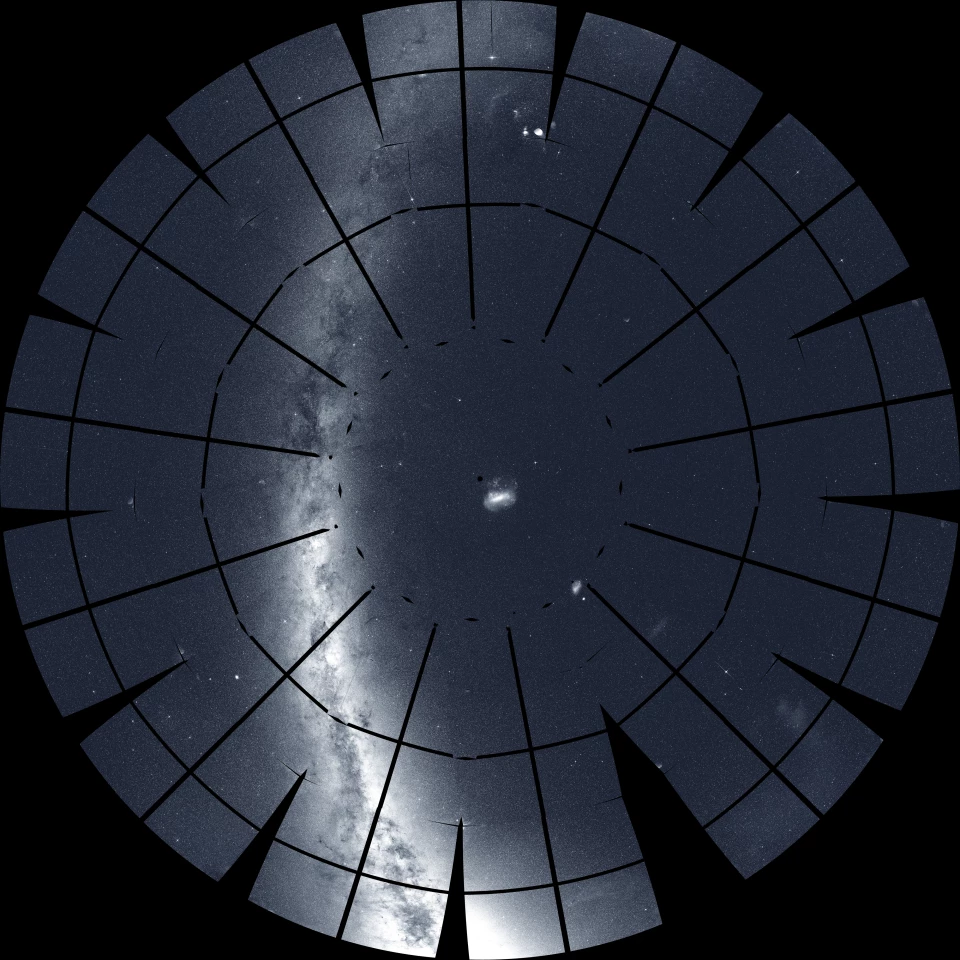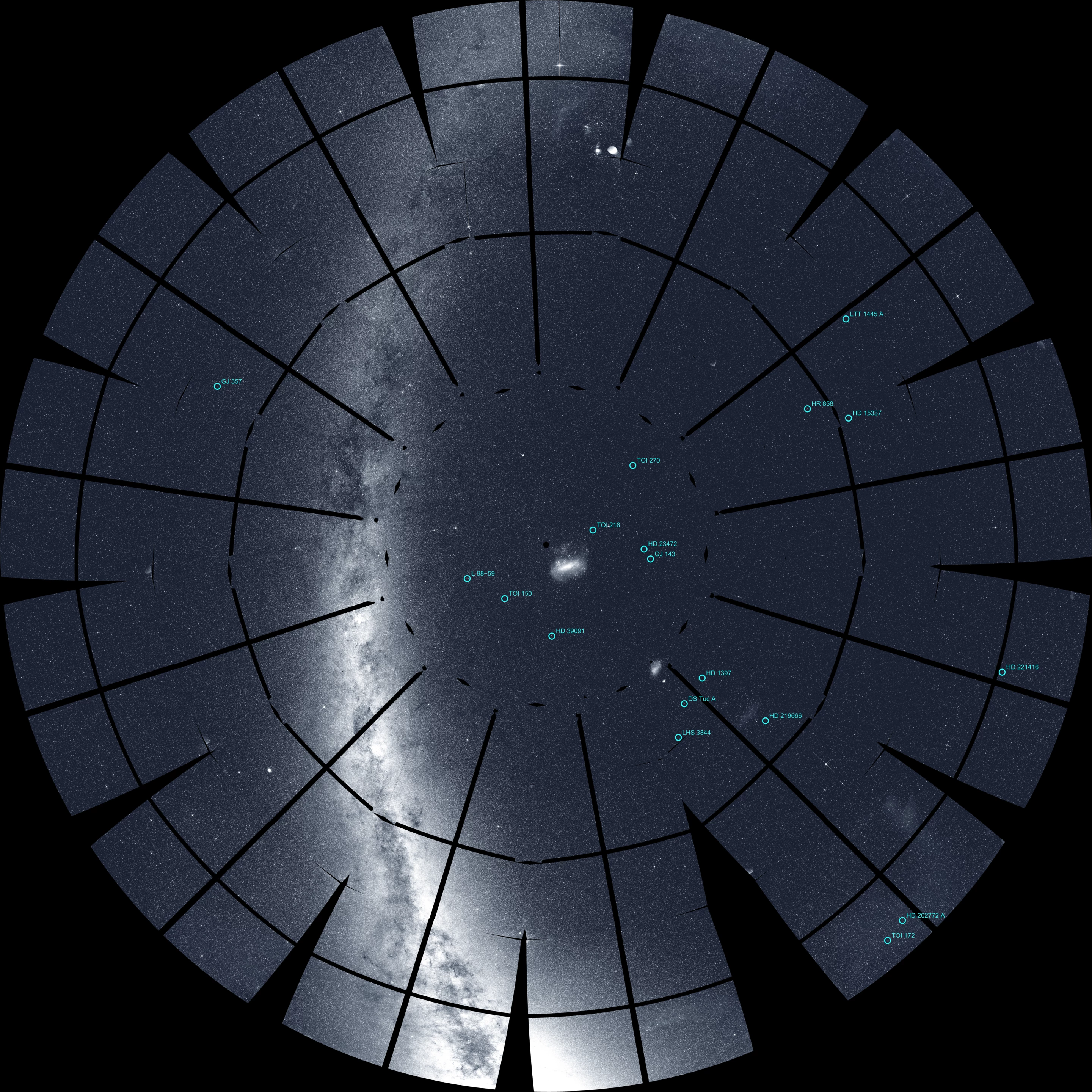NASA has released an enormous mosaic of the southern sky, stitched together from images captured by the agency’s Transiting Exoplanet Survey Satellite (TESS) over the course of its first year of science observations. A total of 208 images were used to create the striking cosmic panorama, which features the bright band of the Milky Way, complete with orbiting satellite galaxies.
TESS was launched atop a Falcon 9 rocket on April 18, 2019 with a mission to survey 200,000 of the brightest stars visible from Earth, looking for the telltale dip in light that occurs as an orbiting exoplanet passes between the face of its parent star and the sensitive eyes of the telescope. The imaging campaign divided the southern sky into 13 sectors, each of which was observed for roughly one month by TESS’s four powerful cameras, which together house 16 charge-coupled devices (CCDs).
The exoplanet hunter’s first year of scientific observations has been eventful to say the least. Each of the CCDs mounted in TESS’s cameras took 15,347 images as they observed a complete sector of the sky once every 30 minutes. In its maiden campaign, the prolific satellite sent back to Earth a staggering 20 terabytes of data, in which 29 new worlds were discovered, and a further 1,183 candidate exoplanets were identified for follow-up studies.
Before beginning science operations, the powerful observatory also managed to capture a comet streaking through our solar system, and later watched as a voracious black hole destroyed a faraway star.

Every one of these incredible discoveries is contained within the scope of the newly-released mosaic. The bright mass of the Milky Way can be seen edge-on, forming a vertical arc across the left hand side of the vista. The famous Orion Nebula can also be seen just to the right of the arc, near the top of the image
Closer to the center, the Large Magellanic Cloud – a dwarf satellite galaxy that orbits the Milky Way – shines proudly against the starfield beyond. This vast collection of stars and cosmic gas is currently located about 163,000 light-years from Earth, and spans an impressive 14,000 light-years from end to end. Below and to the right is another, smaller bright smudge, which represents another satellite galaxy – the Small Magellanic Cloud.
“Analysis of TESS data focuses on individual stars and planets one at a time, but I wanted to step back and highlight everything at once, really emphasizing the spectacular view TESS gives us of the entire sky,” said Ethan Kruse, a NASA Postdoctoral Program Fellow who assembled the mosaic at NASA’s Goddard Space Flight Center in Greenbelt, Maryland.
With the southern sky mapped, TESS has now turned its gaze to the northern heavens, and begun the process anew.
Scroll down to watch a video giving highlights of the newly released TESS mosaic, courtesy of NASA
Source: NASA








